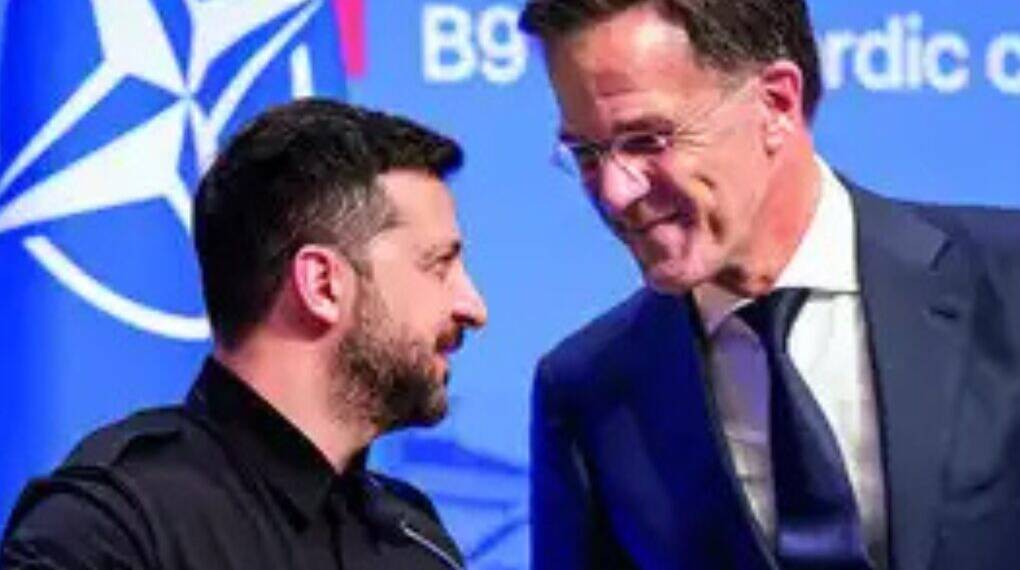As NATO defense ministers prepare to convene in Brussels this week, a defining theme is expected to dominate the agenda: urgency. In response to escalating security threats posed by Russia’s ongoing war in Ukraine and broader strategic shifts, NATO is urging its European member states to expand their ground-based air-defense capabilities by a staggering fivefold. The ambitious target reflects not only the alliance’s growing unease with Moscow’s military intentions but also a hard pivot toward full-spectrum war preparedness—a stark departure from decades of relative complacency.
Filling the Air Defense Gap: A Historic Weakness
For much of the post-Cold War era, European defense spending and strategic posturing largely reflected a belief that major inter-state conflict on the continent was improbable. This led to the scaling back of high-end capabilities like ground-based air-defense systems, with resources diverted toward expeditionary missions in the Middle East and Africa. However, Russia’s 2022 full-scale invasion of Ukraine shattered those assumptions.
Europe’s donation of large portions of its limited air-defense systems to Ukraine laid bare a dangerous vulnerability. NATO officials have since issued blunt warnings: if a similar-scale conflict were to erupt elsewhere in Europe, especially along the alliance’s eastern flank, the continent would be ill-equipped to protect its forces or population centers from modern aerial threats such as drones, cruise missiles, and fighter aircraft.
A Collective but Uneven Push
The push for a fivefold increase is collective, aimed at Europe’s NATO members as a whole. Individual countries will scale their efforts based on capacity and threat perception. Germany, for instance, has taken a leadership role through its European Sky Shield Initiative—a multilateral effort launched under former Chancellor Olaf Scholz and now being expanded aggressively by Chancellor Friedrich Merz. The initiative envisions a European-wide missile shield to intercept ballistic threats, coordinated with NATO’s existing frameworks.
While the exact timeframe for the fivefold expansion remains undefined, the political momentum is clear. European capitals are waking up to the reality that the next phase of continental security will be shaped not only by allied solidarity but by operational capability on European soil.
Beyond 2%: NATO’s New Spending Doctrine
This air-defense buildup is part of a broader transformation in NATO’s defense philosophy. Long derided by U.S. President Donald Trump for relying too heavily on American military might, European nations are now embracing a new spending target: 5% of GDP, with 3.5% earmarked for core defense and an additional 1.5% for related sectors like cyber security and logistics infrastructure.
This marks a significant shift. The traditional benchmark—2% of GDP on defense—was met or exceeded by most member states only in the wake of Russia’s invasion of Ukraine. Now, the bar is being raised yet again, reflecting a consensus that strategic deterrence can no longer be underwritten primarily by Washington.
The Return of Forward Deterrence
“We are not at war, but we’re not at peace either,” declared NATO Secretary General Mark Rutte in Vilnius this week, summarizing the alliance’s emerging doctrine of “permanent preparedness.” The phrase captures the grey-zone reality of today’s European security landscape—where open warfare in Ukraine coincides with cyberattacks, disinformation campaigns, and hybrid threats across the continent.
This is a return, in many ways, to Cold War-style forward deterrence, but adapted for the 21st century. Modern air defense is central to this posture. Unlike the nuclear tripwire of the past, today’s deterrence hinges on robust, interoperable conventional forces capable of withstanding the first wave of any surprise attack.
Ukraine at the Summit: A Signal of Integration
Adding symbolic weight to the Brussels meeting is the announcement that Ukrainian President Volodymyr Zelenskyy has been invited to the upcoming NATO leaders’ summit in The Hague later this month. While Ukraine’s formal membership in NATO remains a contentious issue, its inclusion in such high-level forums suggests a de facto alignment that is becoming increasingly difficult to ignore.
The move sends a strong signal to Moscow and underlines NATO’s political unity—even as it works feverishly to close the operational gaps that might undermine its military credibility.
Strategic Implications
NATO’s call for a massive expansion in air defenses marks a critical inflection point. The alliance is acknowledging, with unusual candor, that its current capabilities are insufficient to meet the threat landscape of the 2020s. If successfully executed, the buildup will significantly increase Europe’s resilience and lessen its dependency on American firepower—a shift that could recalibrate the transatlantic relationship in profound ways.
However, challenges remain. Defense procurement cycles are long, budgets are politically sensitive, and competing domestic priorities could slow implementation. Furthermore, the fivefold target—though aspirational—will demand extraordinary coordination among diverse political and industrial ecosystems across Europe.
Conclusion
In calling for an unprecedented expansion of ground-based air defense, NATO is not merely preparing for war—it is trying to prevent one. By investing in credible deterrence and autonomous defense capability, the alliance is aiming to reinforce the security architecture that has kept the peace in Europe for over 75 years. Whether this initiative succeeds may determine the continent’s strategic trajectory for decades to come.








